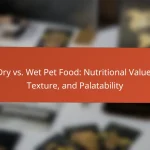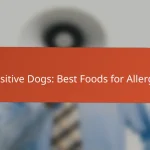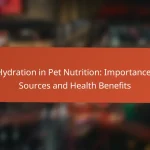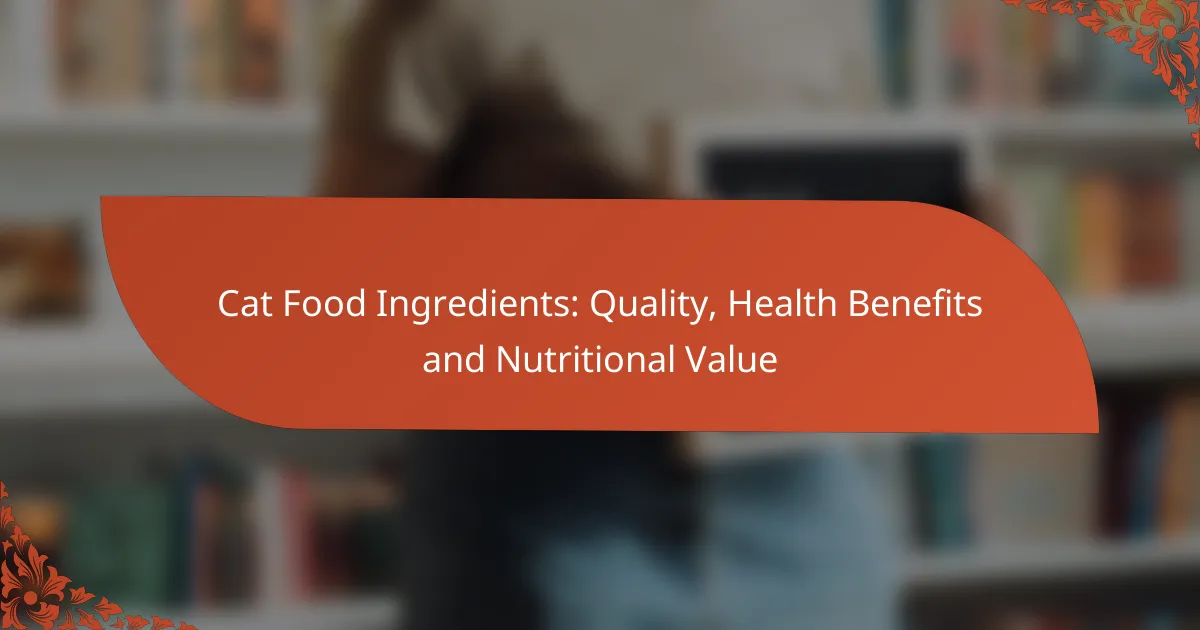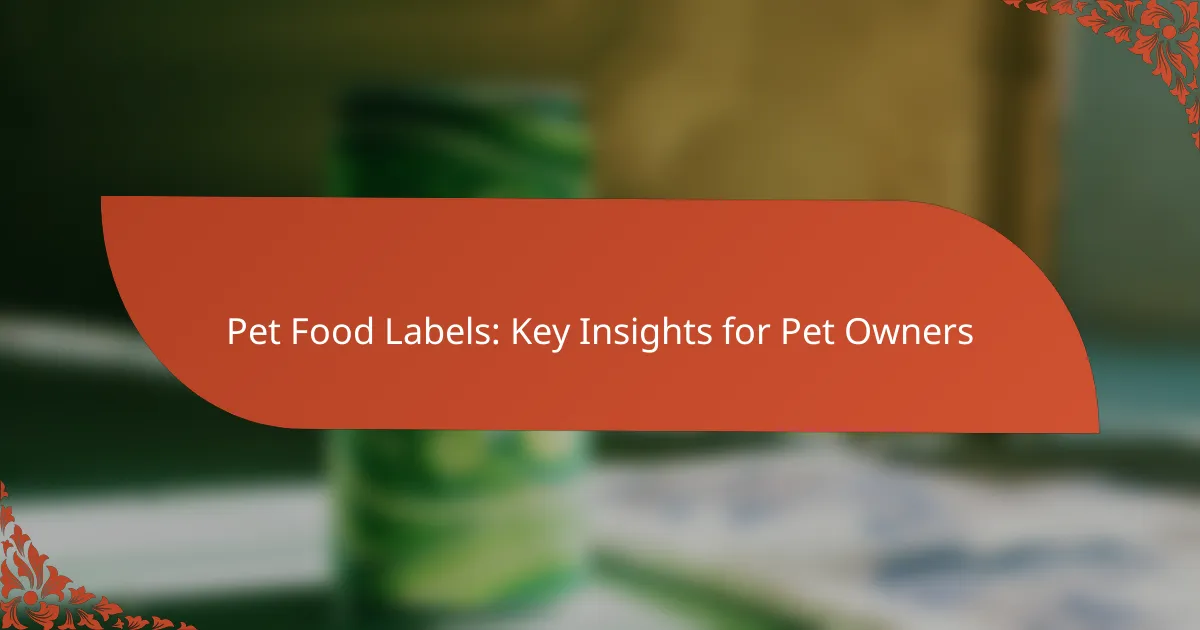Choosing the right cat food ingredients is crucial for your pet’s health and well-being. High-quality proteins, essential fatty acids, vitamins, and minerals work together to provide balanced nutrition, while premium ingredients can enhance overall health benefits. Understanding the nutritional value of these components helps ensure your cat receives the best possible care through their diet.
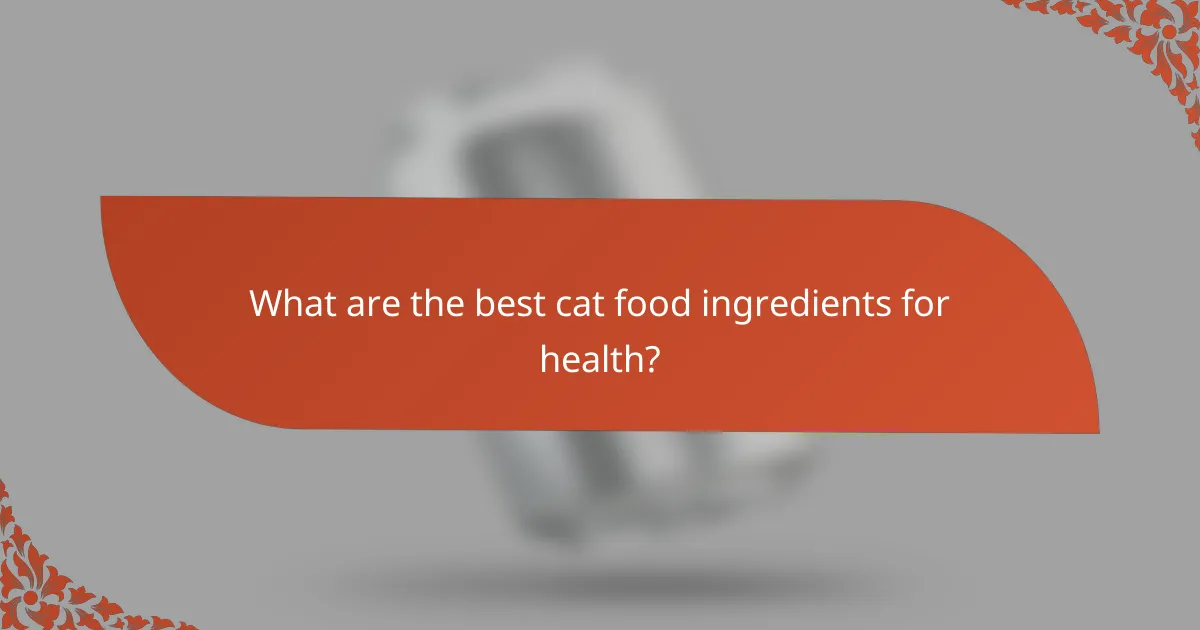
What are the best cat food ingredients for health?
The best cat food ingredients for health include high-quality proteins, essential fatty acids, vitamins, minerals, and whole grains or vegetables. These components work together to support your cat’s overall well-being, ensuring they receive balanced nutrition for optimal health.
High-quality protein sources
High-quality protein sources are crucial for maintaining your cat’s muscle mass and overall health. Look for ingredients like chicken, turkey, fish, and beef, which provide essential amino acids. Aim for cat food that lists a specific meat as the first ingredient, ensuring a protein-rich diet.
Be cautious of meat by-products, as they can vary in quality. A good rule of thumb is to choose products with at least 30-40% protein content for active cats, while less active cats may require slightly lower levels.
Essential fatty acids
Essential fatty acids, particularly omega-3 and omega-6, play a vital role in your cat’s skin and coat health, as well as supporting brain function. Ingredients like fish oil and flaxseed are excellent sources of these fatty acids. Look for cat food that includes these ingredients to promote a shiny coat and healthy skin.
Ensure that the food contains a balanced ratio of omega-3 to omega-6 fatty acids, as this balance is important for optimal health. A general guideline is to have a higher omega-6 content compared to omega-3, reflecting the natural diet of cats.
Vitamins and minerals
Vitamins and minerals are essential for various bodily functions, including immune support and bone health. Key vitamins such as A, D, E, and B-complex, along with minerals like calcium and phosphorus, should be included in your cat’s diet. Commercial cat foods typically meet these requirements, but it’s wise to check the label for completeness.
Consider choosing foods that are formulated to meet the Association of American Feed Control Officials (AAFCO) standards, which ensure that the food provides all necessary nutrients for your cat’s life stage.
Whole grains and vegetables
Whole grains and vegetables can provide additional fiber, aiding in digestion and promoting a healthy weight. Ingredients like brown rice, oats, and peas are beneficial and can help your cat feel full without excessive calories. However, cats are obligate carnivores, so grains should not be the primary ingredient.
When selecting cat food, aim for products that contain a small percentage of whole grains or vegetables, ideally around 5-10% of the total formula. This ensures your cat receives the benefits of fiber without compromising their protein intake.

How do cat food ingredients affect nutritional value?
Cat food ingredients significantly influence the nutritional value by determining the balance of essential nutrients, digestibility, and overall health benefits for your pet. High-quality ingredients typically lead to better health outcomes, while poor-quality fillers can detract from the food’s effectiveness.
Protein content and digestibility
Protein is a crucial component of cat food, as cats are obligate carnivores requiring high protein levels for optimal health. Look for foods with at least 30-40% protein content from quality sources like chicken, fish, or beef. Additionally, digestibility matters; proteins that are easily digestible provide more nutritional benefits and reduce waste.
When selecting cat food, check for specific protein sources rather than generic terms like “meat by-products.” This ensures your cat receives high-quality protein that supports muscle maintenance and overall vitality.
Impact of fillers on nutrition
Fillers such as corn, wheat, and soy are often used in cat food to bulk up the product but offer little nutritional value. While some fillers can provide energy, they may lead to weight gain and digestive issues if used excessively. Aim for foods with minimal fillers, ideally less than 10% of the total ingredients.
Reading ingredient labels can help you identify high-quality options. Ingredients should be listed in descending order by weight, so prioritize those with real meat and whole foods at the top of the list.
Role of moisture in cat food
Moisture content is essential in cat food, especially for those that primarily consume dry kibble. Cats naturally have a low thirst drive, so wet food or high-moisture options can help prevent urinary tract issues and promote hydration. Aim for wet food that contains at least 75% moisture.
When considering dry food, ensure it has adequate moisture content in the form of added water or broth. This can enhance palatability and encourage your cat to drink more water, supporting overall health.
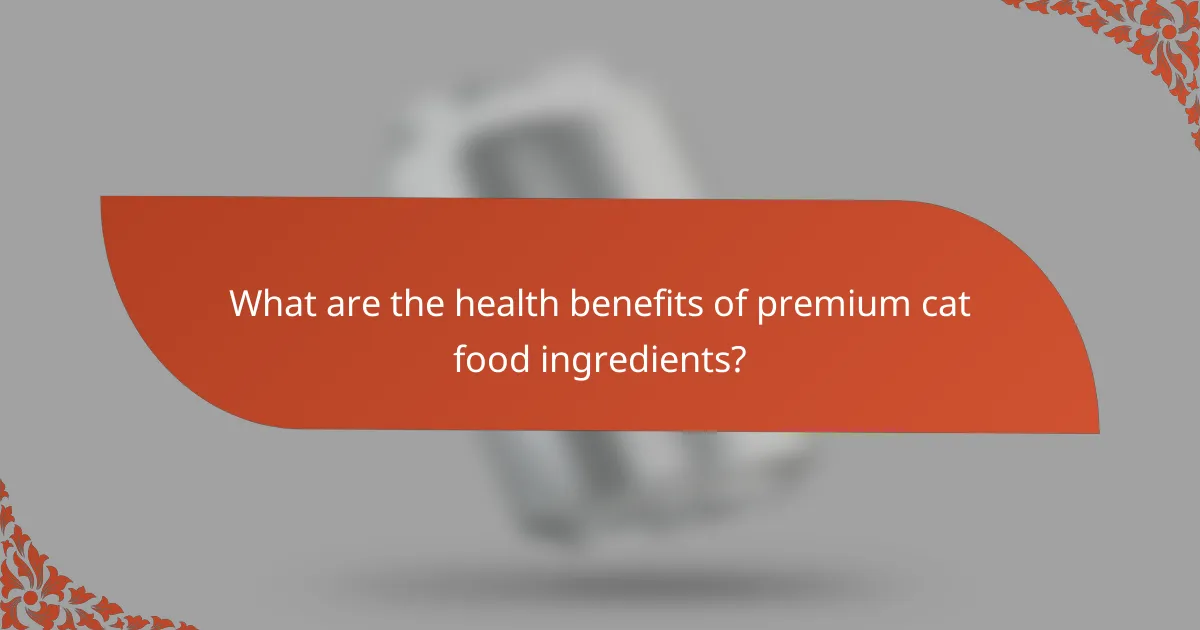
What are the health benefits of premium cat food ingredients?
Premium cat food ingredients offer significant health benefits, enhancing your cat’s overall well-being. These high-quality components support various aspects of health, from coat condition to immune function and digestion.
Improved coat condition
High-quality ingredients in cat food, such as omega fatty acids, contribute to a shiny and healthy coat. Ingredients like fish oil or flaxseed are rich in these essential fats, promoting skin hydration and reducing shedding.
To ensure your cat benefits from improved coat condition, look for foods that list these ingredients prominently. Regularly feeding your cat premium food can lead to noticeable changes in coat texture and appearance within weeks.
Enhanced immune function
Premium cat food often contains antioxidants, vitamins, and minerals that strengthen the immune system. Ingredients like blueberries, spinach, and specific vitamins (such as E and C) help combat oxidative stress and support overall health.
When selecting cat food, prioritize those with a balanced blend of these immune-boosting ingredients. A strong immune system can help your cat fend off illnesses and recover more quickly from infections.
Better digestion and gut health
High-quality cat food is formulated with digestible proteins and prebiotics that promote gut health. Ingredients such as chicken, turkey, and specific fibers can enhance nutrient absorption and support a healthy digestive tract.
To improve your cat’s digestion, consider foods that include probiotics or natural fibers. Monitoring your cat’s stool quality can provide insights into their digestive health; well-formed stools often indicate a balanced diet.
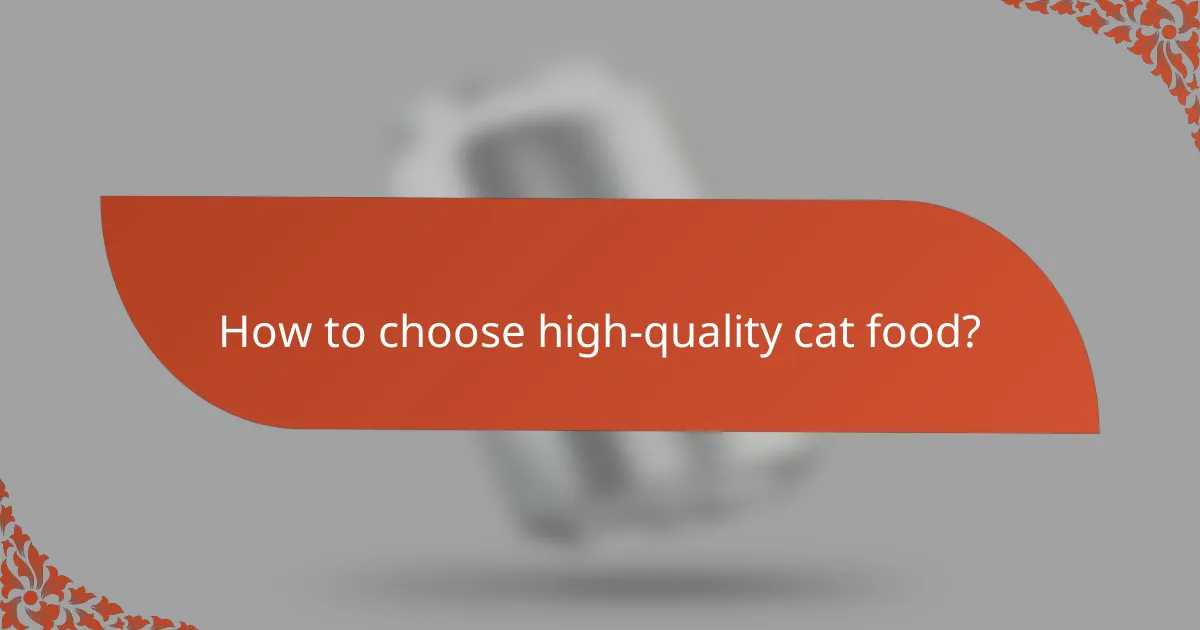
How to choose high-quality cat food?
Choosing high-quality cat food involves examining ingredient labels, understanding industry standards, and evaluating brand reputation. Focus on nutrient-rich ingredients and avoid fillers to ensure your cat receives optimal nutrition.
Reading ingredient labels
Ingredient labels are crucial for assessing the quality of cat food. Look for named meat sources, such as chicken or salmon, as the first ingredient, indicating a protein-rich diet. Avoid foods with vague terms like “meat by-products” or excessive fillers like corn and soy.
Check for additional beneficial ingredients like omega fatty acids, vitamins, and minerals. A high-quality cat food should have a balanced formula that meets your cat’s specific life stage and health needs.
Understanding AAFCO standards
The Association of American Feed Control Officials (AAFCO) sets guidelines for pet food labeling and nutritional adequacy. Look for products that state they meet AAFCO standards, ensuring they provide complete and balanced nutrition for your cat.
AAFCO also defines terms like “complete,” “balanced,” and “formulated,” which can help you understand the nutritional claims made by manufacturers. Familiarize yourself with these terms to make informed choices.
Evaluating brand reputation
Brand reputation plays a significant role in selecting high-quality cat food. Research brands through customer reviews, expert opinions, and recall history to gauge their reliability and commitment to quality.
Consider brands that invest in research and development, use high-quality ingredients, and have transparent sourcing practices. A reputable brand will often provide detailed information about their manufacturing processes and ingredient sourcing.

What are common allergens in cat food?
Common allergens in cat food include ingredients that can trigger sensitivities or allergic reactions in some cats. These allergens often consist of specific grains, artificial additives, and certain protein sources that may not be well-tolerated by all felines.
Grains and gluten
Grains, such as wheat, corn, and soy, are frequent allergens in cat food. Many cats are sensitive to gluten, a protein found in some grains, which can lead to digestive issues or skin problems. When selecting cat food, look for grain-free options if your cat shows signs of allergies.
Some brands offer formulations specifically designed for sensitive cats, using alternative carbohydrate sources like sweet potatoes or peas. Always monitor your cat’s reaction to new foods to identify any potential allergens.
Artificial additives
Artificial additives, including preservatives, colors, and flavor enhancers, can also cause allergic reactions in some cats. Ingredients like BHA, BHT, and ethoxyquin are commonly used but may lead to health issues over time. Opting for natural or organic cat food can help minimize exposure to these synthetic compounds.
When reading labels, look for products that list minimal or no artificial ingredients. This can not only reduce the risk of allergies but also promote better overall health for your cat.
Specific protein sources
Specific protein sources, such as beef, chicken, and fish, can be allergens for some cats. While these proteins are often the primary ingredients in cat food, they may trigger sensitivities in certain individuals. If your cat develops symptoms like itching or gastrointestinal distress, consider trying novel protein sources like duck or rabbit.
Consult with your veterinarian to determine the best protein options for your cat’s diet, especially if they have a history of food allergies. A gradual transition to new protein sources can help prevent digestive upset.
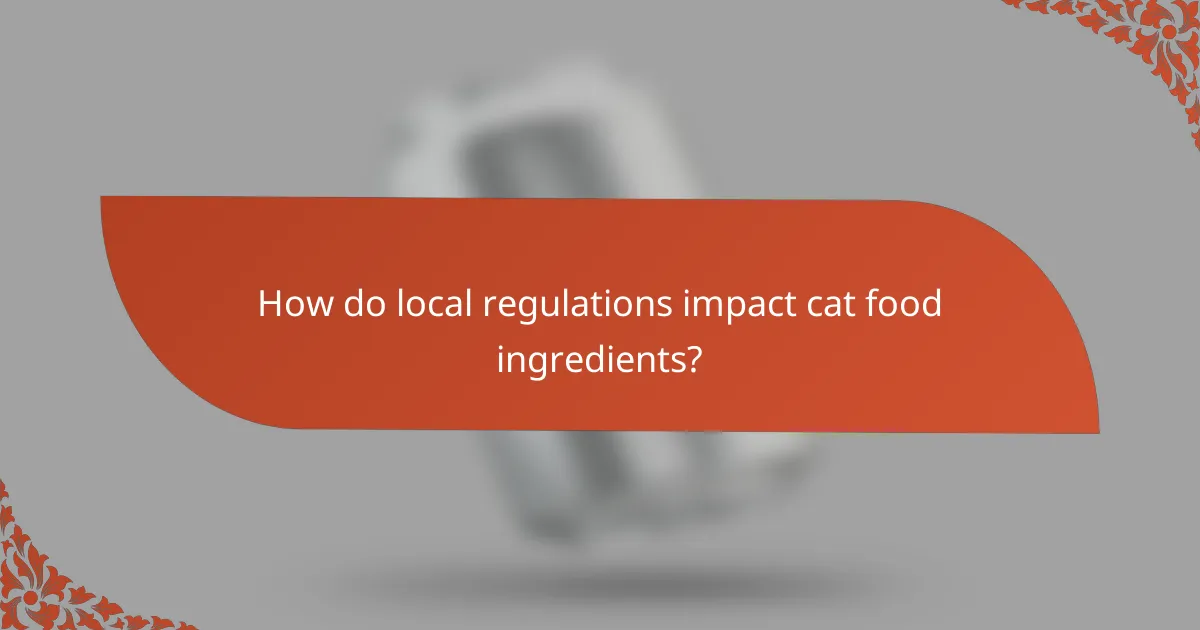
How do local regulations impact cat food ingredients?
Local regulations significantly influence the ingredients used in cat food, ensuring safety and nutritional standards. These rules vary by country and can dictate what can be included, labeling requirements, and even the manufacturing processes.
Understanding Ingredient Regulations
Ingredient regulations are established to protect pet health and ensure the quality of cat food. In many regions, such as the European Union and the United States, regulations require that all ingredients be safe for consumption and properly labeled. For example, the Association of American Feed Control Officials (AAFCO) sets guidelines for ingredient definitions and nutritional adequacy in the U.S.
Manufacturers must comply with these regulations to avoid penalties and ensure their products are marketable. This means that ingredients must meet specific safety standards and nutritional profiles, which can vary significantly between countries.
Labeling Requirements
Labeling requirements are crucial for informing consumers about the ingredients in cat food. In the U.S., labels must include a guaranteed analysis of nutrients, ingredient lists, and feeding guidelines. Similarly, in the EU, regulations mandate clear labeling that specifies the origin and quality of ingredients.
Consumers should look for labels that comply with these regulations to ensure they are purchasing safe and nutritious food for their pets. Misleading labels can sometimes lead to confusion about the quality and source of ingredients.
Impact on Ingredient Sourcing
Local regulations can affect where manufacturers source their ingredients. For instance, some countries may have restrictions on importing certain animal products, which can limit the availability of specific protein sources. This can lead to variations in ingredient quality and nutritional value across different brands.
Pet owners should be aware of these sourcing impacts, as they can influence the overall health benefits of the cat food. Choosing brands that adhere to strict regulations often ensures higher quality ingredients and better nutritional profiles.
